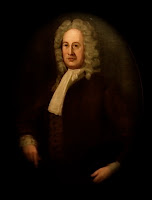Beginning Wednesday night, the Grand Lodge of California will offer five online lecture presentations, featuring world renowned speakers, to take us through Saint John Baptist Day. There will be no fee to join, but register at On24 to take part. Also, take note of the start times. The speakers are from all over, so it looks like the scheduling is based on their availability. From the publicity:
Introducing the Online
Masonic Speaker Series
New Speakers Series Brings
Masonic Experts Online
Beginning in late April, the Masons of California will host an exciting and entirely digital speaker series featuring lectures and talks from Masonic experts on a range of topics. All events are free. To attend, simply register.
April 29
7:30 to 8:30 p.m.
Patrick Craddock
Admit Him if Properly Clothed:
The History of the Masonic Apron
in America, 1740 to the Present
Author and historian Patrick Craddock, Past Master of Conlegium Ritus Austeri 779 in Nashville, and a noted expert on Masonic regalia, discusses the history of the Masonic apron and how it has changed over 250 years. The presentation features images of many historic American aprons. In addition to his work as a writer and museum exhibits curator at the Carter House Museum in Franklin, Tennesse, Craddock is the owner of the Craftsman’s Apron.
May 13
5 to 6 p.m.
Dr. Oscar Alleyne
Topic: TBA
A published author, subject matter expert, and scientific presenter in the field of applied epidemiology, health policy, and public health, Dr. Oscar Alleyne is senior advisor for public health programs at the National Association of County and City Health Officials in Washington, DC. There he is responsible for providing executive leadership, strategic visioning, senior management, and technical assistance to the country’s 3,000 local governmental public health departments. He directly oversees a portfolio of Infectious Disease Prevention and Control, Public Health, Pandemic and Catastrophic Preparedness, and Public Health Informatics. He interfaces directly with the U.S. Centers for Disease Control and Prevention, the Department of Homeland Security, the FBI, and the Office of the Assistant Secretary for Preparedness and Response, FDA, USDA, EPA and several other national agencies.
Dr. Alleyne is the Junior Grand Warden of the Grand Lodge of New York. Raised in Wallkill Lodge 627 in Orange, he served from 2014 to 2016 as Master of Wappingers Lodge 671. He is also Past Commander-in-Chief and Past Sovereign Prince at the Scottish Rite Valley of the Hudson, and served as Grand Superintendent for the state of New York for the Grand Council of Allied Masonic Degrees.
He lectures internationally on history, ritual, philosophy, leadership, and other Masonic topics of interest, and is a member of several Masonic research and invitational bodies.
May 27
Noon to 1 p.m.
Dr. Andreas Önnerfors
The Development
of Scandinavian Freemasonry
Dr. Andreas Önnerfors is an associate professor in the History of Sciences and Ideas Department at the Universities of Gothenburg and Lund, and is Master of Quatuor Coronati Lodge 2076. From 2007 to 2010 he was contracted by the University of Sheffield, where he worked as director of the Centre for Research into Freemasonry and Fraternalism, and as a senior lecturer in their department of history. Dr. Önnerfors is the author of “Freemasonry: A Very Short Introduction,” and numerous other papers on Freemasonry and fraternal culture. He regularly lectures on Freemasonry in academia and to the general public, and is frequently consulted by international media on various subjects.
June 10
7:30 p.m.
Steve Doan
The Magic Flute
Join California Past Grand Master R. Stephen Doan to explore the Masonic influence on Bro. Mozart’s iconic opera The Magic Flute. Doan will be joined by W. Bro. James Lincoln Warren, Past Master of Santa Monica Pallisades Lodge 307, and an expert on music and conducting.
June 24
Noon to 1 p.m.
Robert L. D. Cooper
Scottish Freemasonry
and the United States of America
Robert L.D. Cooper is the curator of the Grand Lodge of Scotland’s Museum and Library, making him the custodian of some of the oldest and most precious Masonic documents in the world. A Past Master of Quatuor Coronati Lodge 2076 and a recognized historian and expert on Scottish Freemasonry, the Knights Templar, and the Sinclair family, Cooper has lectured around the world and has appeared on TV numerous times as a Masonic authority, as well as having authored numerous articles and books. Among them are The Red Triangle: A Brief History of Masonophobia, The Masonic Magician: The Life and Death of Count Cagliostro and His Egyptian Rite, and The Rosslyn Hoax? Viewing Rosslyn Chapel from a New Perspective.























































































